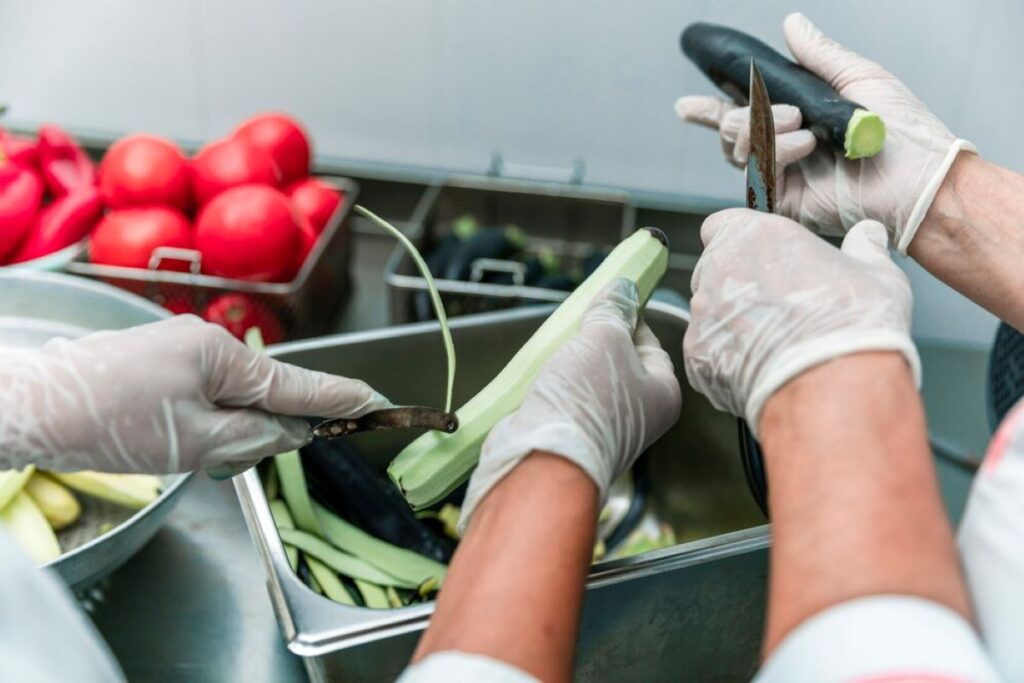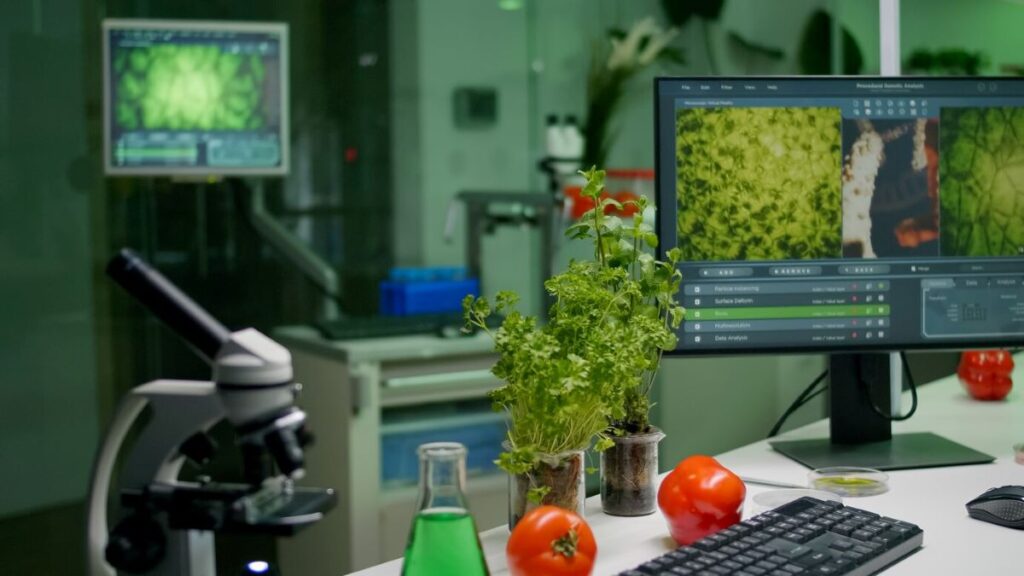Food safety management through Hazard Analysis Critical Control Points (HACCP) has been a cornerstone of quality assurance in the food industry for decades. Traditional paper-based HACCP systems, while foundational, present significant operational challenges:
- Time-consuming manual documentation
- Risk of human error in record-keeping
- Limited accessibility to critical data
- Difficulty in tracking compliance trends
- Delayed response to safety breaches
HACCP food safety software emerges as a transformative solution, revolutionising how businesses monitor and manage food safety protocols. This innovative technology replaces cumbersome paper trails with streamlined digital processes, enabling real-time monitoring and immediate corrective actions.
The modernisation of food safety monitoring through digital solutions is becoming essential for operational excellence. As regulatory requirements grow stricter and consumer expectations rise, businesses must adapt to maintain compliance and protect public health. Digital HACCP software provides:
- Real-time temperature monitoring
- Automated compliance tracking
- Instant alert systems
- Comprehensive data analytics
- Cloud-based record storage
The shift towards digital food safety monitoring represents a crucial evolution in the industry. This technology not only enhances operational efficiency but also strengthens the foundation of food safety management, setting new standards for quality assurance across the food service sector.
Understanding Digital HACCP Software
Digital HACCP software transforms traditional food safety monitoring into a streamlined, automated process through cloud-based technology. This innovative solution digitises the seven principles of HACCP while maintaining regulatory compliance and enhancing operational efficiency.
Core Functions:
- Real-time hazard analysis documentation
- Automated critical control point monitoring
- Digital record-keeping and data storage
- Instant alert systems for safety violations
- Customisable compliance checklists
- Integrated reporting capabilities
The software’s automation capabilities eliminate manual data entry by connecting with smart sensors and monitoring devices. These systems continuously track critical parameters such as temperature, humidity, and time across various control points in the food handling process.
Automated Hazard Analysis Features:
- Risk assessment documentation
- Preventive measures tracking
- Critical limit monitoring
- Corrective action logging
- Verification procedure management
- Record maintenance and accessibility
Digital vs Paper-Based Systems
Traditional paper-based systems face numerous limitations:
- Time-consuming manual documentation
- Prone to human error
- Physical storage requirements
- Difficult data retrieval
- Limited accessibility
- Risk of damage or loss
Digital HACCP software addresses these challenges through:
- Instant data capture and storage
- Reduced human error through automation
- Cloud-based accessibility
- Advanced search capabilities
- Secure backup systems
- Multi-device compatibility
The integration of smart sensors with digital HACCP platforms creates a robust monitoring system that operates 24/7. This constant surveillance ensures food safety parameters remain within acceptable ranges, triggering immediate alerts when deviations occur. Staff can access real-time data through mobile devices, enabling quick response to potential hazards and maintaining consistent food safety standards.
Key Features of Digital HACCP Solutions
Digital HACCP software brings powerful capabilities through advanced features designed to streamline food safety monitoring processes:
1. Customisable Digital Checklists
- Task-specific checklists tailored to different operational areas
- Built-in validation rules preventing incomplete or incorrect entries
- Photo documentation capabilities for visual verification
- Digital signatures for staff accountability
- Automated scheduling of recurring checks
2. Smart Sensor Integration
- Wireless temperature sensors for continuous monitoring
- Bluetooth-enabled food probes for instant readings
- Integration with existing kitchen equipment
- Cloud-based data storage and synchronisation
- Historical temperature tracking across multiple points
3. Intelligent Alert Systems
- Push notifications for temperature breaches
- SMS alerts for critical control point violations
- Escalation protocols for unaddressed issues
- Customisable threshold settings
- Automated incident reporting
4. Advanced Record-Keeping Features
- Digital audit trails with time stamps
- Secure cloud storage for compliance records
- Automated backup systems
- Data encryption for sensitive information
- Quick access to historical records
The system’s wireless sensors technology enables round-the-clock monitoring without manual intervention. Temperature data flows automatically from connected devices to the central platform, creating a comprehensive view of food safety conditions across facilities.
Real-time monitoring capabilities allow immediate detection of potential hazards. When temperatures drift outside safe ranges or other critical parameters deviate from set standards, the system triggers instant alerts to designated staff members.
These automated record keeping features eliminate paper-based documentation challenges. The digital platform maintains detailed logs of all food safety activities, from daily temperature checks to corrective actions taken. This creates an unalterable record that satisfies regulatory requirements while providing valuable operational insights.
The integration of smart sensors with customisable alerts transforms reactive food safety management into a proactive system. Staff can address potential issues before they escalate into serious food safety risks, protecting both consumer health and business reputation.
Moreover, the advantages of such digital HACCP solutions extend beyond mere compliance and record-keeping; they also play a crucial role in enhancing overall operational efficiency and effectiveness in food safety management.

Benefits and Operational Impact of Implementing Digital HACCP Software
Digital HACCP software transforms food safety monitoring into a streamlined, efficient process with measurable benefits across operations. The implementation of these digital solutions delivers substantial improvements in regulatory compliance, operational efficiency, and cost management.
Enhanced Regulatory Compliance
Digital record-keeping creates permanent, tamper-proof documentation that meets strict regulatory requirements:
- USDA Compliance: Automated documentation ensures adherence to United States Department of Agriculture standards
- FSMA Requirements: Digital systems align with Food Safety Modernisation Act protocols
- International Standards: Built-in compliance with ISO 22000 and other global food safety certifications
- Audit-Ready Records: Instant access to historical data and compliance reports
Rapid Response Capabilities
The implementation of digital HACCP systems enables swift action against potential food safety risks:
- Real-time violation detection reduces contamination risks by up to 90%
- Automated alerts trigger immediate corrective actions
- Digital tracking enables precise batch identification for targeted recalls
- Historical data analysis helps prevent recurring issues
Operational Cost Benefits
Digital HACCP solutions deliver significant return on investment through:
Time Savings
- 75% reduction in manual documentation time
- Streamlined audit preparation
- Automated report generation
- Simplified staff training processes
Cost Reduction
- Minimised food waste through better monitoring
- Reduced risk of costly recalls
- Lower insurance premiums due to improved risk management
- Decreased labour costs for compliance management
Resource Optimisation
Digital systems enable better resource allocation:
- Staff focus shifts from paperwork to critical food safety tasks
- Automated monitoring reduces the need for manual checks
- Cloud-based storage eliminates physical storage requirements
- Mobile accessibility increases operational flexibility
These comprehensive benefits demonstrate how digital HACCP software creates measurable improvements in food safety management while delivering substantial operational advantages. The technology’s impact extends beyond basic compliance to create lasting value across the food service operation. Check out more about Business Temperature Monitoring Solutions for Large Facilities
Industry Applications, Use Cases, and Technological Advances Supporting Digital HACCP Software Adoption
Digital HACCP software solutions demonstrate remarkable versatility across multiple sectors, each with unique food safety requirements and operational challenges:
1. Healthcare Facilities
- Temperature monitoring of medical-grade refrigeration units
- Automated tracking of patient meal preparations
- Specialised compliance documentation for dietary requirements
2. Hospitality Sector
- Real-time kitchen equipment performance monitoring
- Integrated inventory management systems
- Automated temperature checks for buffet services
3. Aged Care and Childcare Centres
- Allergen tracking and meal planning
- Specialised dietary requirement management
- Automated sanitisation schedule monitoring
The technological infrastructure supporting these applications includes advanced hardware integrations:
1. Smart Monitoring Systems
- Wireless temperature sensors for cold storage units
- Bluetooth-enabled food probes for instant readings
- RFID tracking for food transportation
2. Automated Documentation Tools
- Digital label printing systems with allergen information
- Mobile scanning capabilities for instant record updates
- Cloud-based data storage for compliance records
These sector-specific applications are enhanced by freight temperature monitoring systems, ensuring food safety throughout the supply chain. The integration of smart label printing technology enables accurate tracking of use-by dates, storage conditions, and allergen information across all operational areas.

Implementation Process, Support Services, and Future Outlook for Digital HACCP Software in Food Safety Monitoring
The implementation of digital HACCP software begins with personalised discovery calls to understand specific operational requirements. These consultative sessions enable providers to:
- Map existing food safety protocols
- Identify compliance gaps
- Configure custom checklists and workflows
- Set up automated monitoring parameters
A structured demo phase allows teams to test-drive the configured solution, ensuring seamless integration with daily operations. The implementation process includes:
- Initial system setup and configuration
- Staff training and onboarding
- Hardware integration and testing
- Live monitoring and adjustment period
24/7 Support Services
Modern digital HACCP platforms offer round-the-clock technical support through:
- Live chat assistance
- Remote troubleshooting
- Regular system updates
- Ongoing compliance consultations
Future Outlook
The food safety monitoring landscape is rapidly evolving towards complete digitalisation. Industry trends indicate:
“By 2025, digital HACCP solutions are projected to become the standard across global food service operations”
This shift is driven by:
- Increasing regulatory pressures
- Rising consumer safety expectations
- Advanced IoT integration capabilities
- Growing demand for real-time compliance monitoring
The future of food safety monitoring lies in adaptable, intelligent systems that evolve with changing industry needs and technological capabilities.

